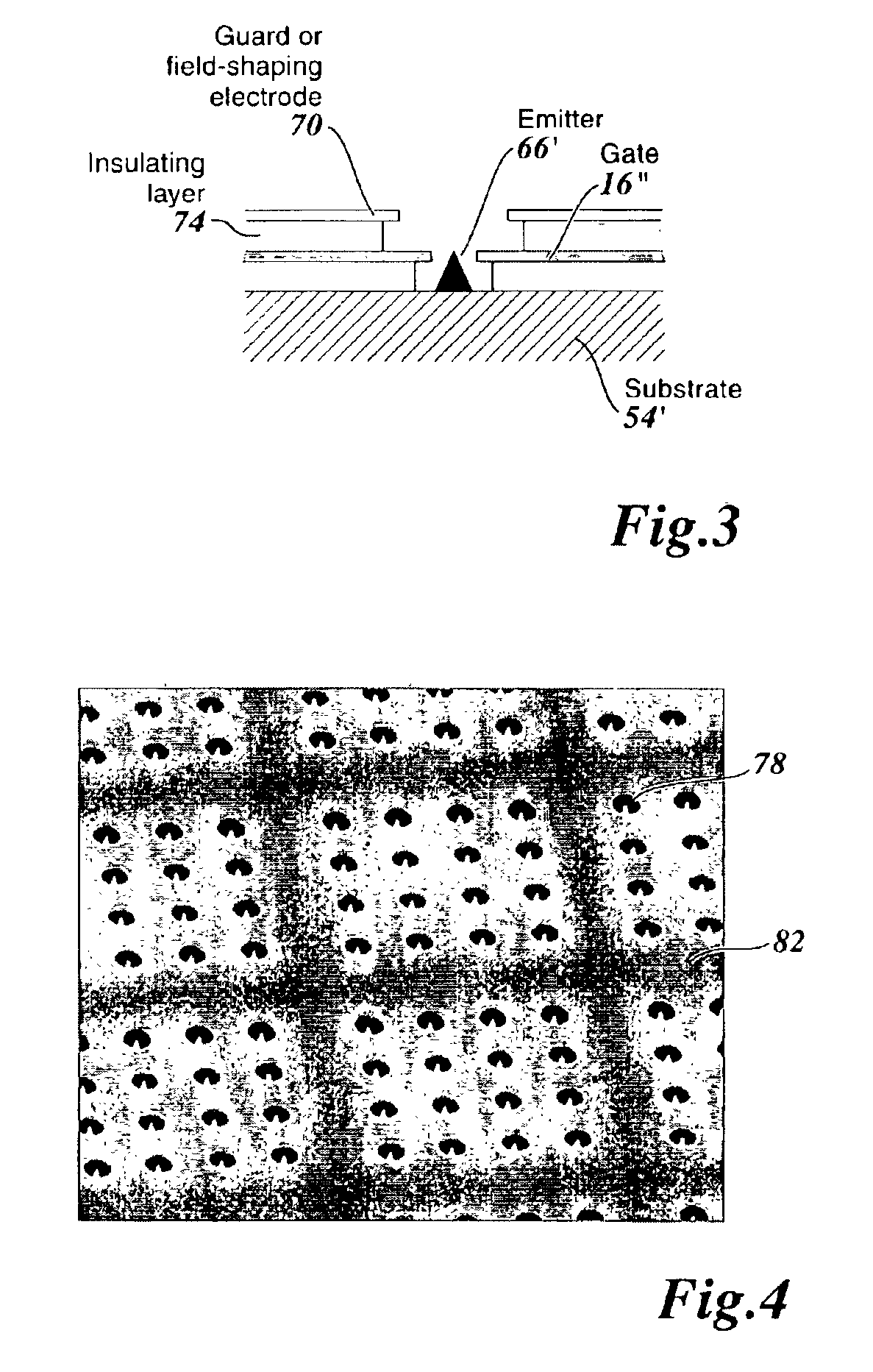System and method of micro-fluidic handling and dispensing using micro-nozzle structures
a micro-nozzle and micro-fluidic technology, applied in the field of micro-fabricated devices, can solve the problems of high voltage needed for electro-spray devices, failure of ongoing analysis, and risk of damage to electro-spray devices and sampling instruments
- Summary
- Abstract
- Description
- Claims
- Application Information
AI Technical Summary
Benefits of technology
Problems solved by technology
Method used
Image
Examples
Embodiment Construction
Gated charge emission devices of the present invention are useful in a variety of applications. In brief overview, gated charge emission devices are micro-fabricated devices that have an integrated gate (or gate electrode) and an emitter from which electrons or ions are emitted. “Integrated” as used herein means that the gate electrode is part of the micro-fabricated structure that includes the emitter, and “micro-fabricated” as used herein means that the devices are made by fabrication techniques of the type used to make integrated circuitry. A voltage applied between the gate electrode and the emitter induces electrons or ions to leave the emitter. For embodiments of gated charge emission devices that operate with a fluid (referred to as fluid-dispensing devices), the applied voltage induces the emitter (or micro-nozzle) to dispense minute volumes of the fluid.
The handling and dispensing of minute volumes of fluids has practical application in a wide range of industries and system...
PUM
| Property | Measurement | Unit |
|---|---|---|
| applied voltage | aaaaa | aaaaa |
| voltage | aaaaa | aaaaa |
| electric field | aaaaa | aaaaa |
Abstract
Description
Claims
Application Information
 Login to View More
Login to View More - R&D
- Intellectual Property
- Life Sciences
- Materials
- Tech Scout
- Unparalleled Data Quality
- Higher Quality Content
- 60% Fewer Hallucinations
Browse by: Latest US Patents, China's latest patents, Technical Efficacy Thesaurus, Application Domain, Technology Topic, Popular Technical Reports.
© 2025 PatSnap. All rights reserved.Legal|Privacy policy|Modern Slavery Act Transparency Statement|Sitemap|About US| Contact US: help@patsnap.com



